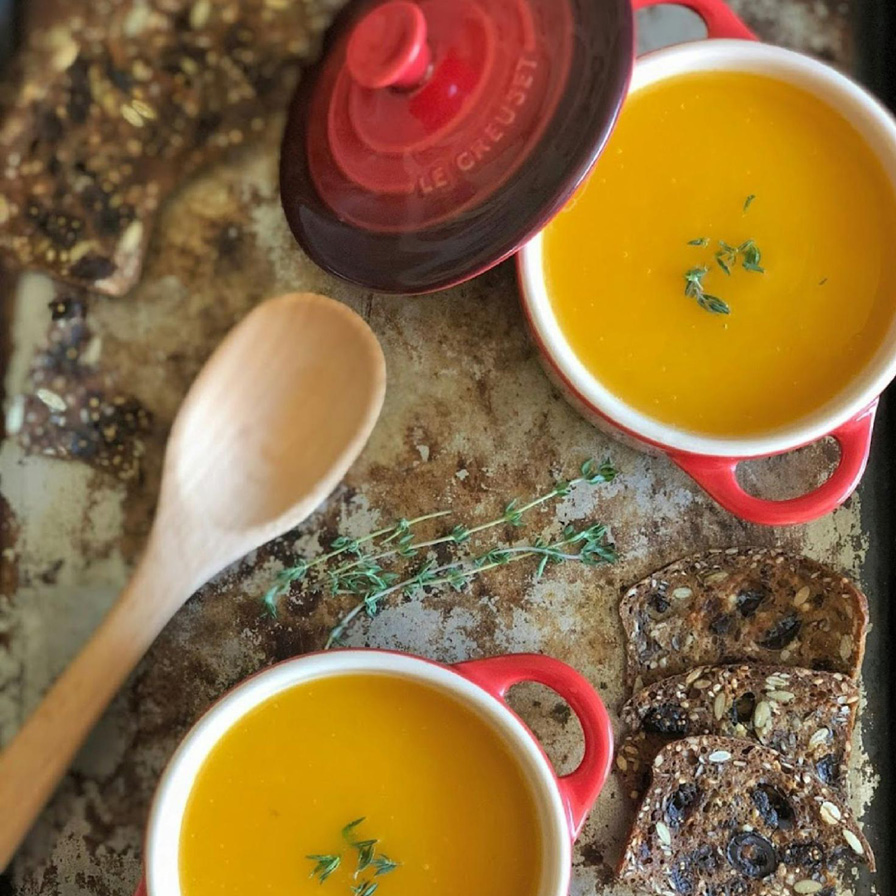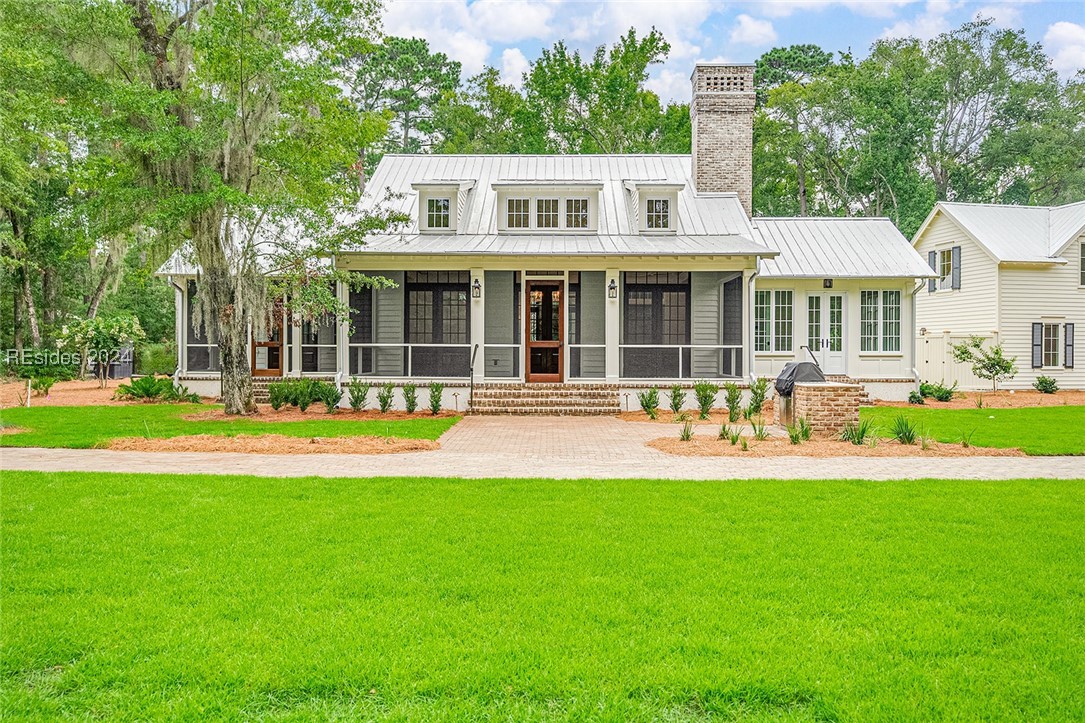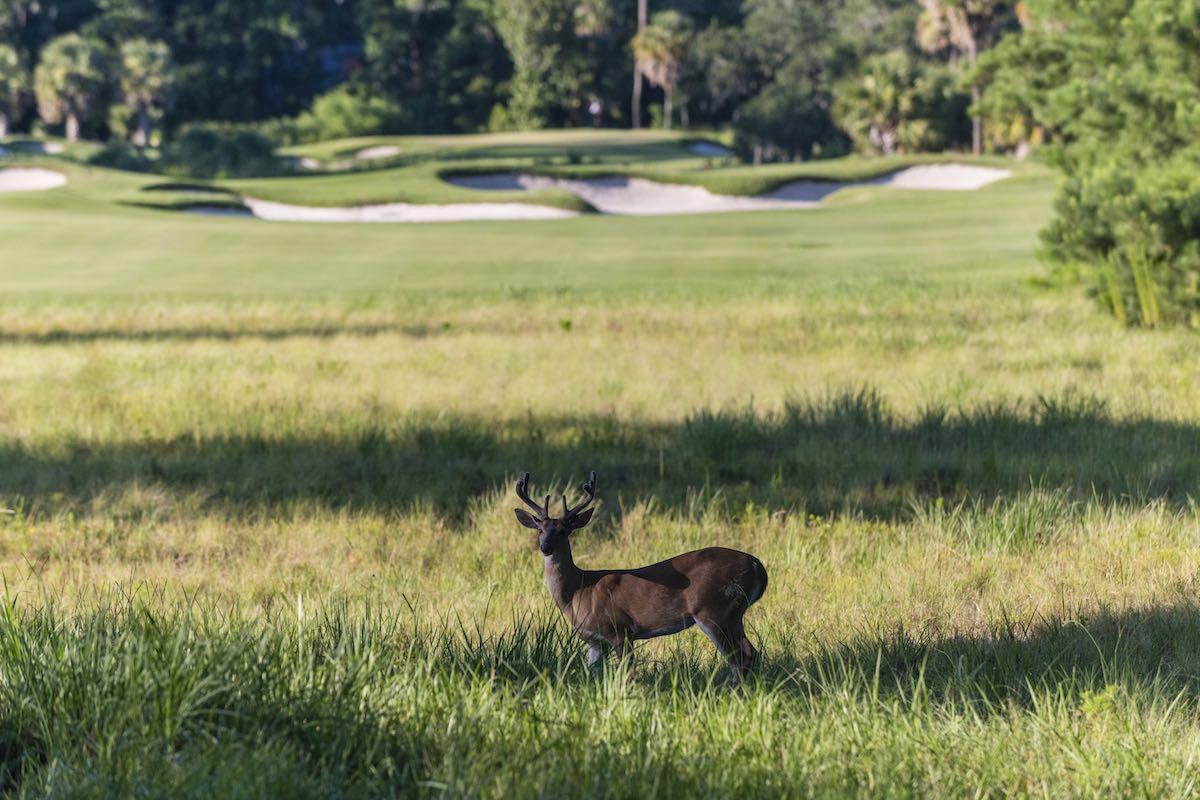Palmetto Bluff Real Estate Company Sales Office
Office Hours
Monday-Friday 9am - 5pm
Saturday 9am - 4pm
Sunday 12 - 4pm
Saturday 9am - 4pm
Sunday 12 - 4pm
If I asked you to think of native pollinators, you would most likely imagine butterflies lazily meandering from flower to flower, catching the breeze on their gently flapping wings. Or bees busily flitting in your garden, picking up pollen grains as they search for nectar.
But would you have reflected on the clumsy bumbling of beetles or the whiny drone of flies? What about bats screeching silently in the Southwest desert night while searching for cactus flowers or the deep hum of a hummingbird’s wings as it visits coral honeysuckle? I bet these animals were not the first to come to mind, but they share a common role: pollinator.
When we first learn about pollinators, we hear about a single species—the honeybee—as the epitome of pollination. What is often omitted is that honeybees are not native to this continent; they were transported to North America by Europeans in the early 1600s. Our native bees, in contrast, are speciose, with around 4,000 species in the United States. Their hues vary from the typical yellow and black of bumblebees to the iridescent blue, green, or turquoise of sweat bees. And bees are only a small part of the pollinator puzzle!


An evolutionary appeal of pollinators is their facilitation of plant reproduction. Specific groups of pollinators are attracted to specific groups of plants. You can actually look at characteristics of a flower—such as size, smell, and color—and make educated guesses about what group of animals pollinates it. Beetles, for example, were some of the first pollinators to evolve and were responsible for fertilizing the earliest flowering plants. Beetles are clumsy, have poor vision, and are inept at manipulating delicate flower parts. Flowers that attract beetles, including those of Southern magnolias, are often large and bowl-shaped, making it easier for beetles to find and maneuver within the flower. Flies are attracted to putrid, fetid odors, and many flowers that attract flies, such as the blooms of pawpaw, mimic the smell of rotting meat. Hummingbirds have excellent color vision and are particularly adept at seeing red. Most plants that attract hummingbirds have blooms that are varying shades of this color.
These phenomena are the result of a coevolutionary dance of seduction, where plants produce flowers that exploit specific traits of pollinators. The end result? The plant ensures it continues to lure the pollinator and the pollinator gets a reward. That does not mean this relationship is without its inherent level of trickery. Plant and pollinator rely on each other while simultaneously trying to “outsmart” their coconspirator. The plant wants to give the pollinator the minimum amount of nectar possible in order to ensure fertilization, and the pollinator wants to get the most nectar and pollen possible during every foraging bout, causing evolutionary tension in the relationship between these two actors.

Thankfully, this system of manipulation is effective. Our pollinators are responsible for fertilizing 80 percent of the flowering plants in the United States, meaning that the survival of flowering plants is closely tied to the survival of pollinators. And it is not just plants that find pollinators creatures of value. WE cannot survive without them either. As mechanisms of pollen transport, pollinators provide us with an essential economic skill. (Yes, pollinators are essential workers). Bees and butterflies—as well as beetles, wasps, flies, birds, and bats—are responsible for one-third of the food we eat. According to the United States Department of Agriculture, pollinators provide a financial benefit to American farmers at a value of $10 billion each year through their simple, and simultaneously complicated, service of pollination.
Unfortunately, pollinators worldwide are experiencing a multifaceted attack on their survival. A 2016 study in Germany found that aerial insect populations plummeted by 76 percent over the course of roughly three decades. Monarch butterfly populations dropped more than 84 percent between 1996 and today. There is no single cause for these declines. Extreme heat events caused by climate change stress plants, decreasing the amount of nectar they can produce. Conversion of natural ecosystems to monoculture crops and grass lawns have eliminated habitat. Pesticides may be used to target specific insect pests but can result in pollinator bycatch, causing a mass mortality of untargeted species. The intertwining negative effects
of climate change, habitat loss, and pesticide use are wreaking havoc on pollinator populations.
Pollinators desperately need our help. Fortunately, there are many small steps we can take to mitigate these challenges. `
There are a handful of actions you can take to promote pollinator survival.
Monarch butterflies are well known for their yearly, multigenerational migration from Mexico to Canada and back. You can help researchers understand monarch migratory behavior by documenting your monarch sightings through a citizen science initiative. Learn more at journeynorth.org/monarchs.
Donate to organizations that focus on invertebrate conservation, such as the Xerces Society for Invertebrate Conservation (xerces.org) and Pollinator Partnership (pollinator.org).
Avoid using pesticides. If needed, there are several organic-certified options. Read more at xerces.org/publications/guidelines/organic-pesticides.
Create a pollinator garden. Choose native plants that bloom successively from spring to fall to ensure there is food for pollinators throughout seasons when they are most active. Larvae may have specific plant requirements that adults do not share, so make sure to include host plants for larvae. Learn more at fs.fed.us/wildflowers/pollinators. Find native plant nurseries near you at xerces.org/pollinator-resource-center or check out Spring Island Nursery at springislandtrust.org.
Certify your garden as a pollinator-friendly habitat. Learn more at nwf.org/garden-for-wildlife/certify or xerces.org/bring-back-the-pollinators.
Be an advocate. Spread the word and educate others!

Tis’ the season for wrapping, and we have plenty of gifts to share from 2024! This year was filled with exciting new beginnings and continued growth at Palmetto Bluff. From two new golf courses to awards for both Montage Palmetto Bluff and FLOW...

Photos courtesy of Leah Bailey DesignPhoto credit: Kelli Boyd PhotographyAs the holiday season descends upon the Lowcountry, Palmetto Bluff becomes a festive haven, where classic Southern architecture meets personal style. Whether you prefer timeless elegance ...

Executive Chef Beth Cosgrove and Registered Dietician Lindsay Ford recently led a Healthy Cooking Demonstration for residents interested in cooking healthy, delicious food to promote wellness. Attendees left with new recipes and flavors to try at home. The But...

Photographs by Anne CaufmannStory by Barry Kaufman The story of this house begins with another.Mike and Melissa Pereyo first visited Palmetto Bluff in 2010 to visit longtime friends Butch and Debbie Floyd. The Floyds built their home here when the fringes of t...

How to Spend a Lowcountry Christmas at Palmetto Bluff There's no better way to start anticipating the holidays than by making plans to spend time with family and friends. Now that the holiday season has arrived, many look forward to embracing the Christmas sp...

Explore 130 August Lane at Montage Residences Nestled in the heart of the Lowcountry, the Montage Residences at Palmetto Bluff offer an unparalleled blend of elegance, exclusivity, and Southern charm. This private collection of homes sits amidst the lush land...

Experience Winter Wildlife This Season at Palmetto Bluff The Lowcountry is a wondrous place to live, not only for its breathtaking scenery and historical significance but also for the wildlife that inhabits it. Winter wildlife in South Carolina includes a wid...

As summer’s heavy air fades into fall’s cool breezes, our resident wildlife are busy preparing for another Lowcountry winter.In the fall, eastern wild turkeys move into habitats mostly dominated by hardwood trees such as oaks, hickories, beeches, cypresses, tu...

The Arts Initiative at Palmetto Bluff hosted an unforgettable evening in the May River Chapel this past October with our visiting Artist in Residence, multi-Grammy-winning singer-songwriter Clay Ross, founding member of the Billboard chart-topping band Ranky T...

This year’s FLOW FEST was an unforgettable celebration of art, music, and community spirit. Held on a stunning autumn afternoon by the May River, our third annual arts and music festival, hosted by The Arts Initiative at Palmetto Bluff, brought together friend...
Learn about the Palmetto Bluff Conservancy and how we keep the vision of our land in place.
On land or water, there is an ever-evolving variety of activities.
We do not attempt to independently verify the currency, completeness, accuracy or authenticity of the data contained herein. All area measurements and calculations are approximate and should be independently verified. Data may be subject to transcription and transmission errors. Accordingly, the data is provided on an “as is” “as available” basis only and may not reflect all real estate activity in the market”. © [2023] REsides, Inc. All rights reserved. Certain information contained herein is derived from information, which is the licensed property of, and copyrighted by, REsides, Inc.